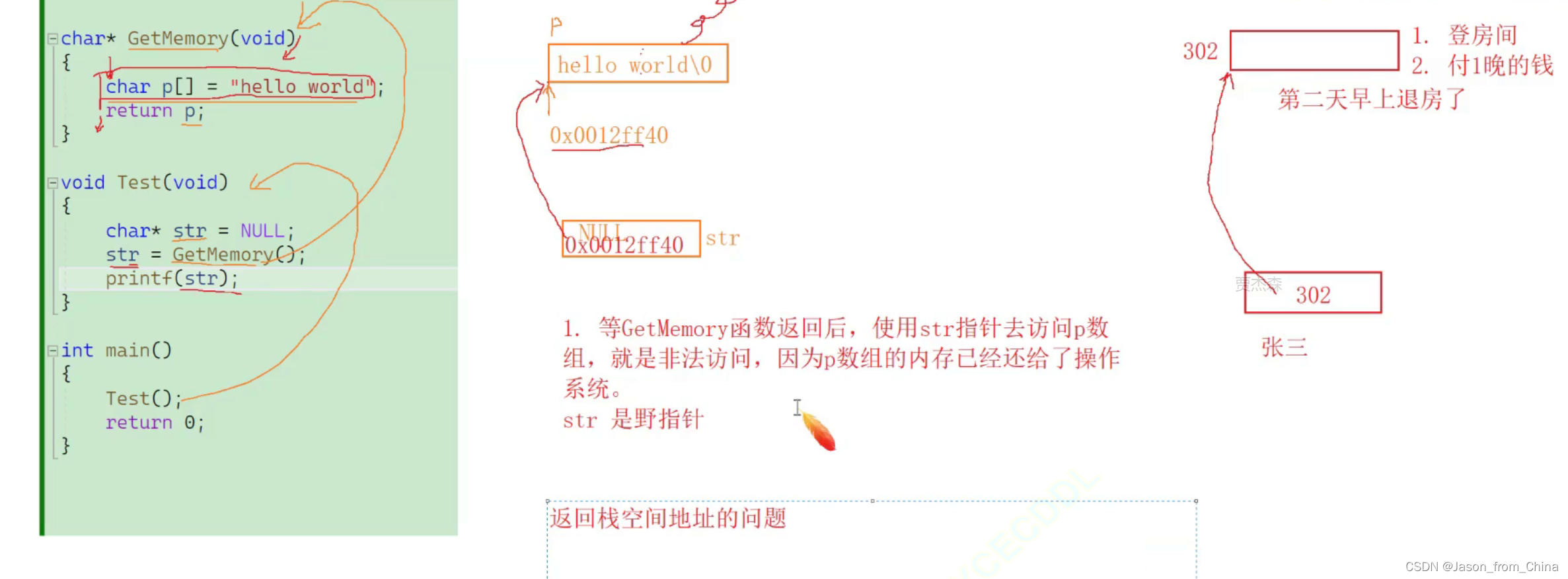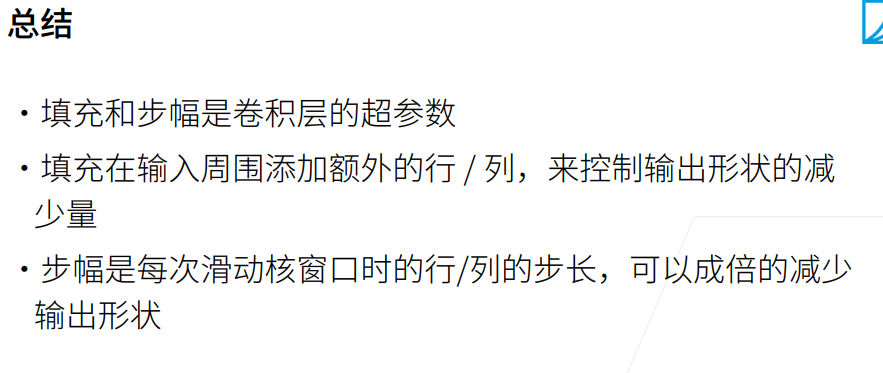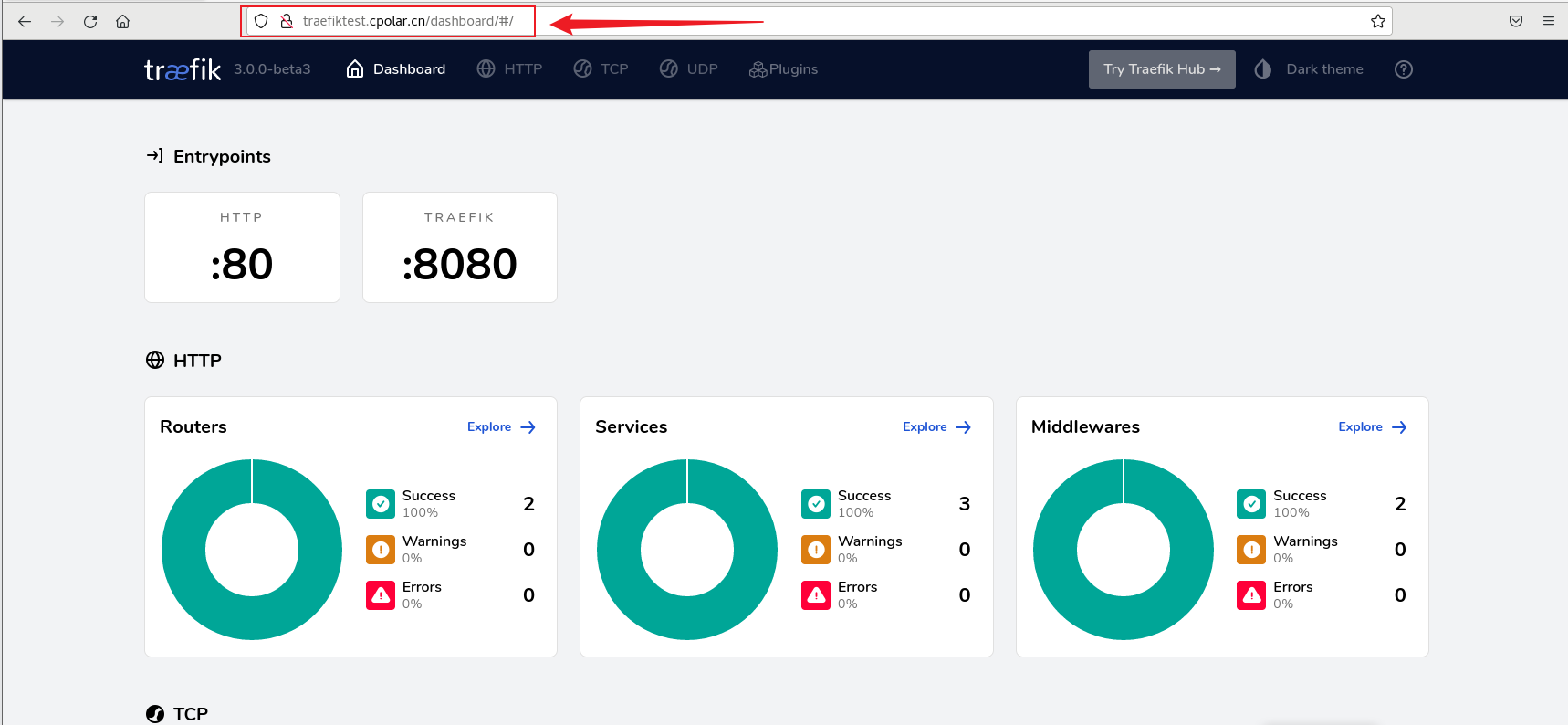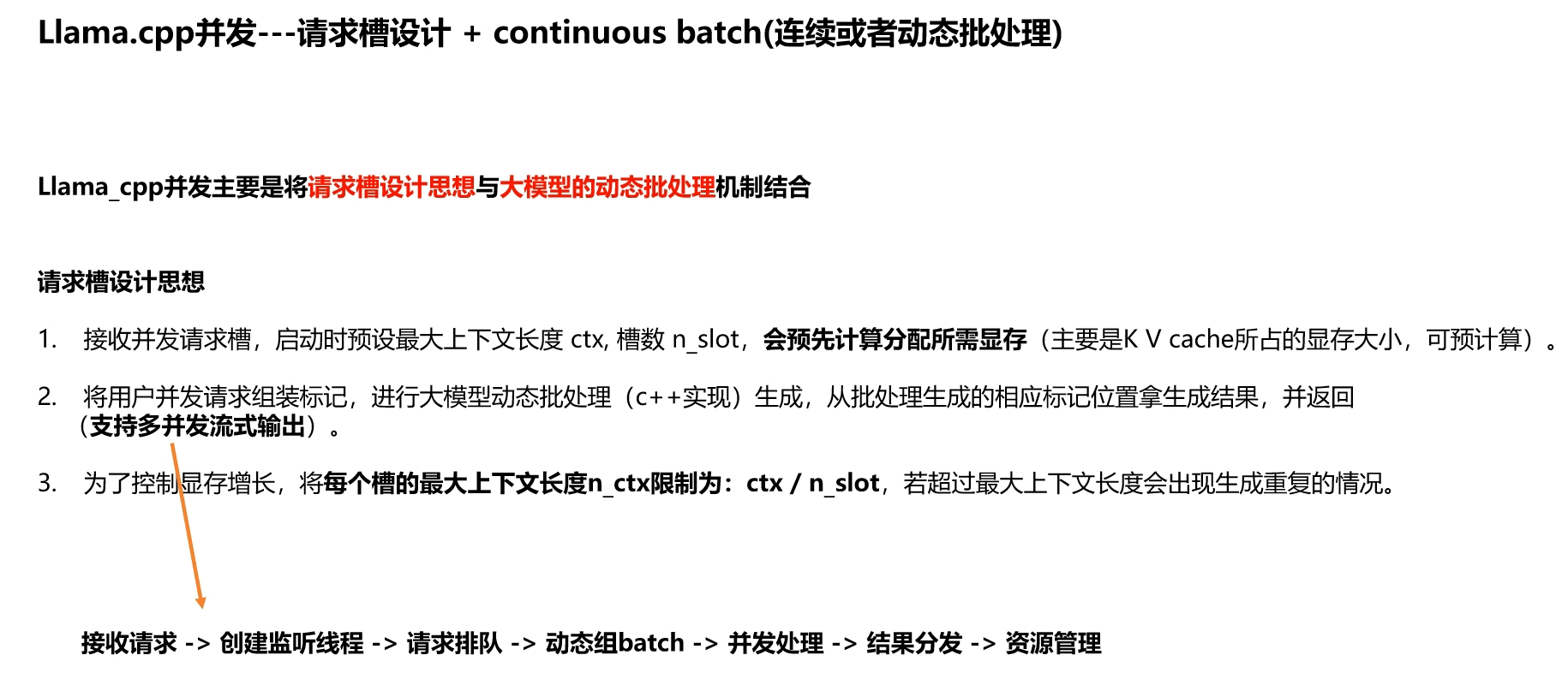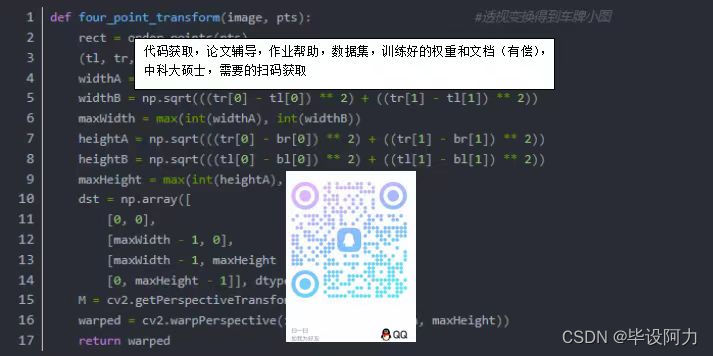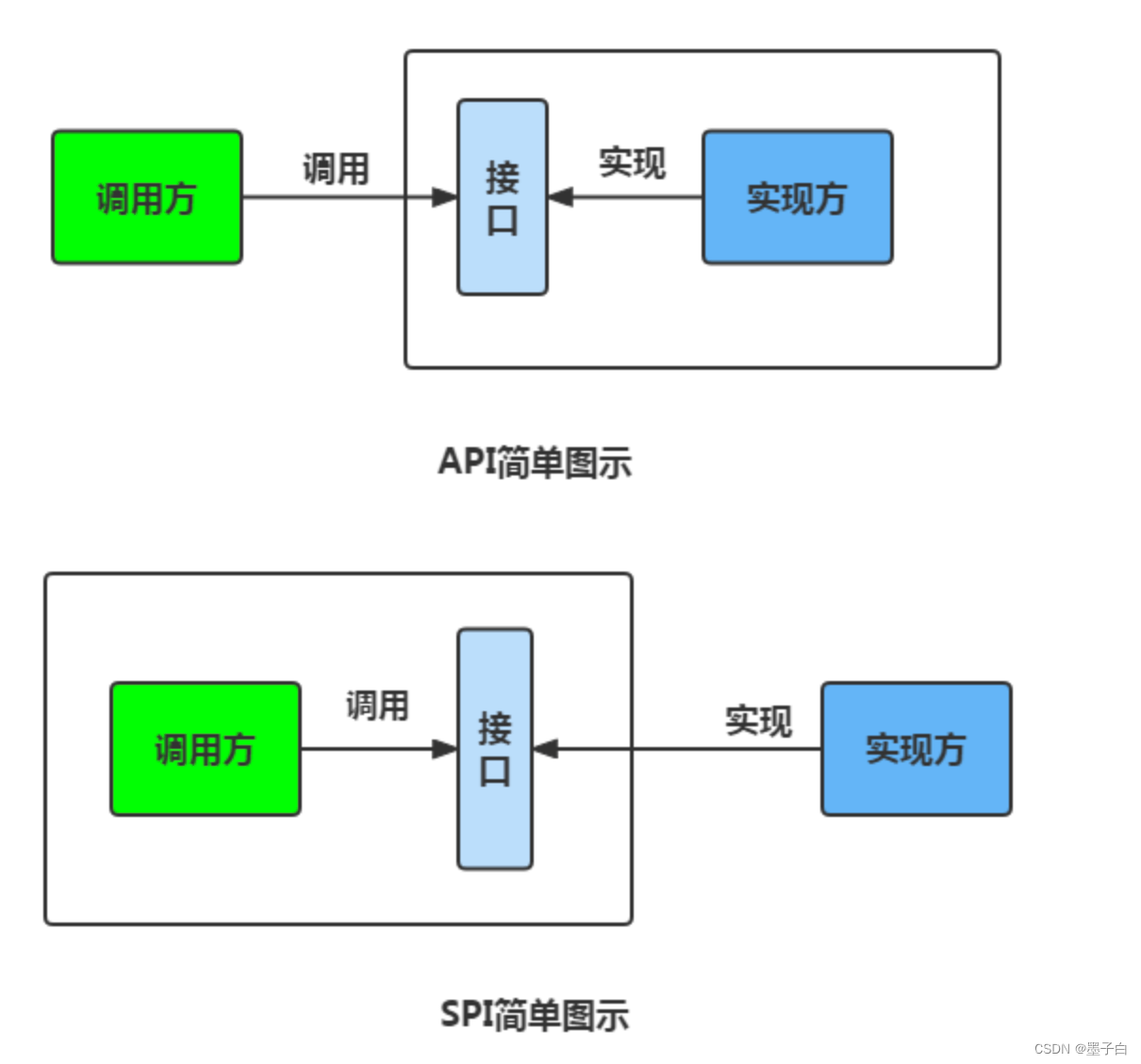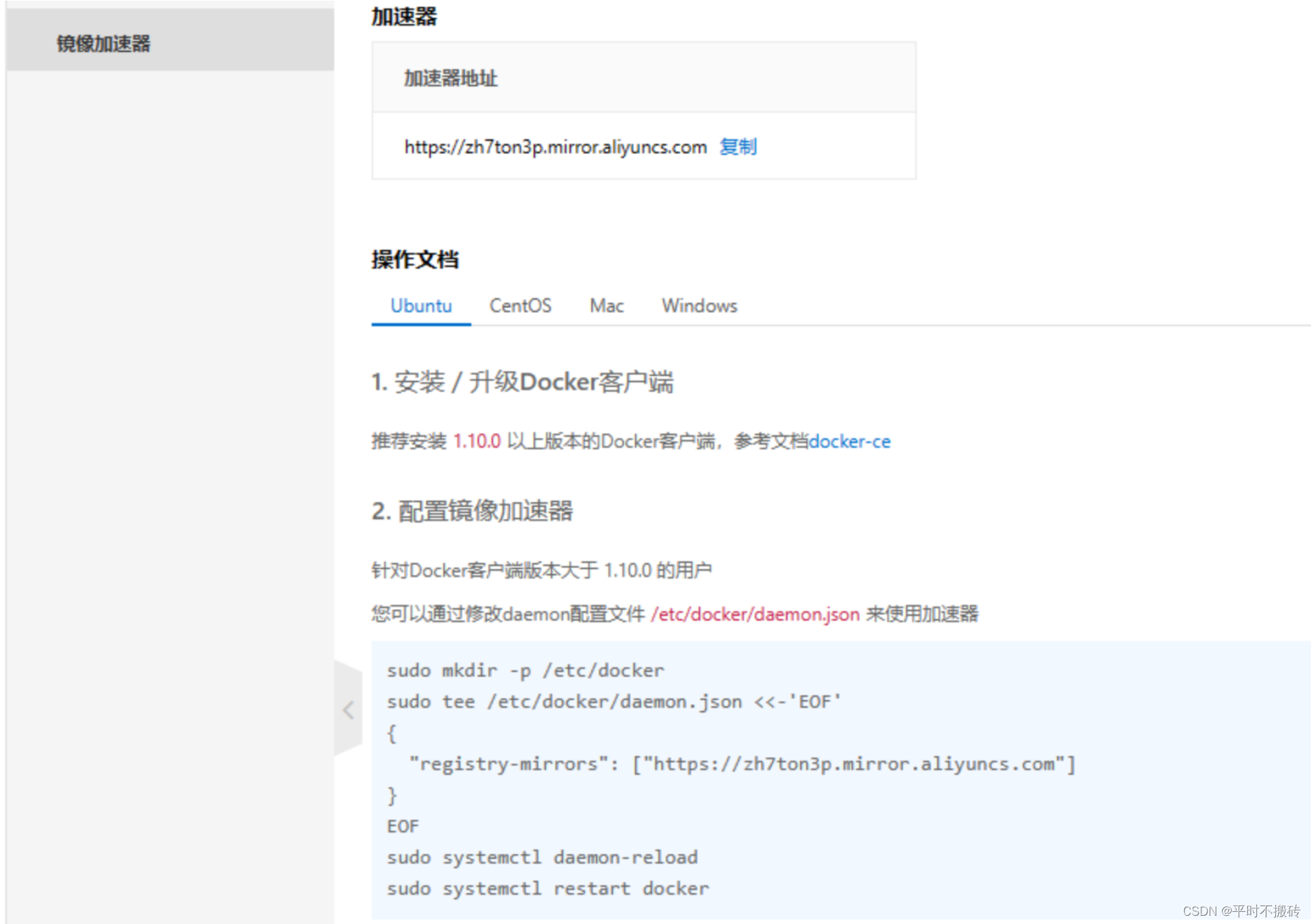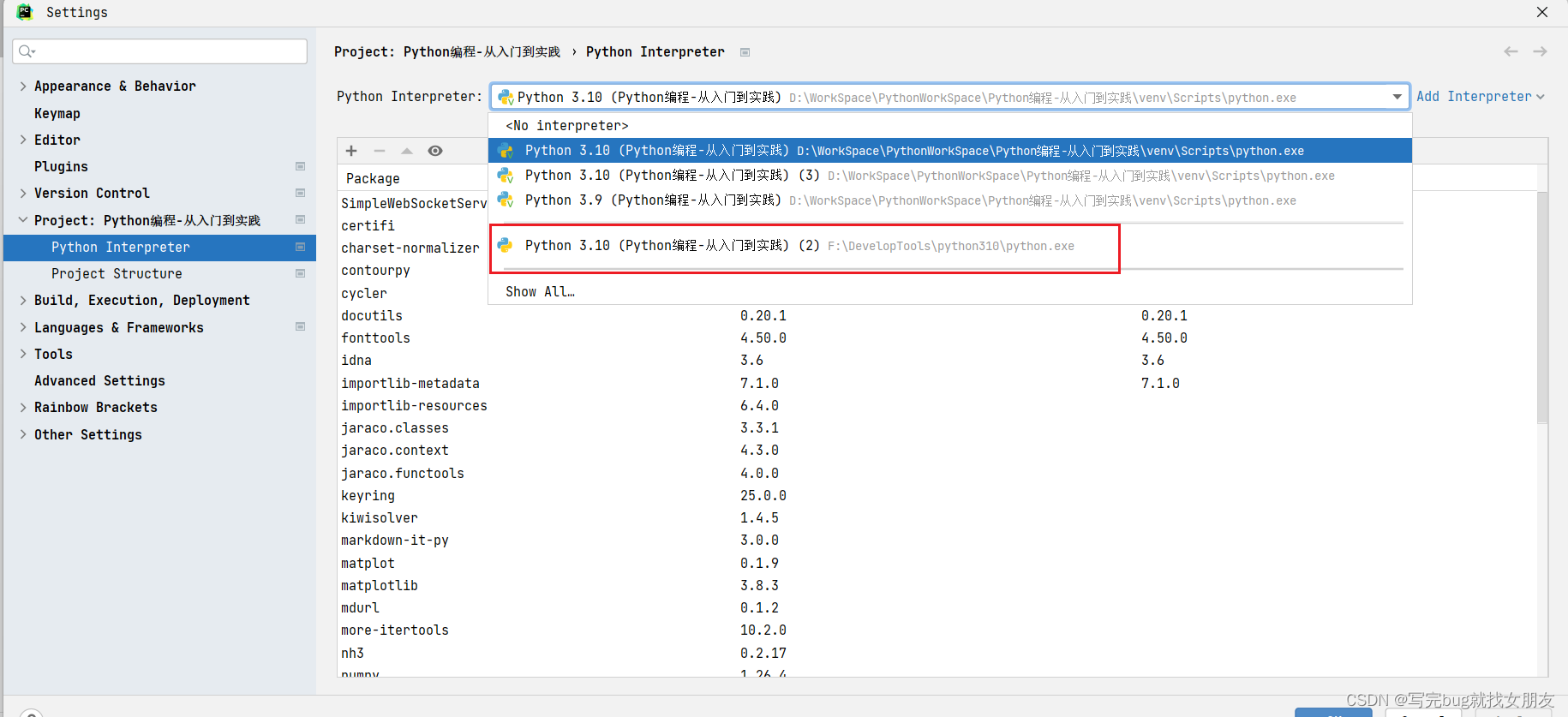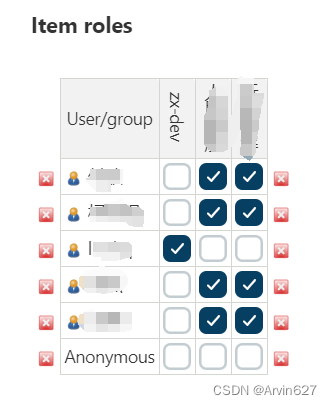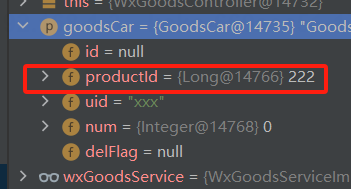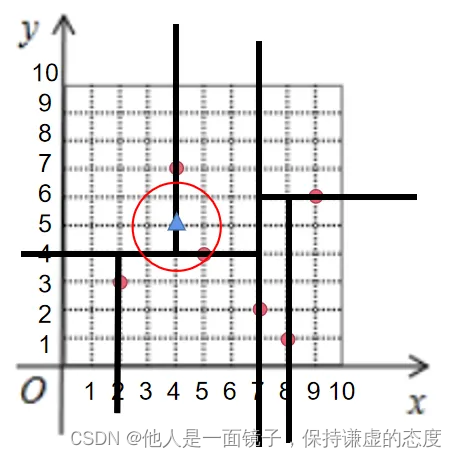前言
最新第一次在做SpringBoot的国际化,网上搜了很多相关的资料,都是一些简单的使用例子,达不到在实际项目中使用的要求,因此本次将结合查询的资料以及自己的实践整理出SpringBoot配置国际化的流程。
SpringBoot国际化
"i18n"是国际化(internationalization)的缩写,数字18代表了国际化这个单词中间的字母数量。类似这样的缩写还有k8s(kubernetes)等
Spring Boot国际化是指在Spring Boot应用中实现多语言支持的功能。通过国际化,应用可以根据用户的语言偏好自动切换显示的语言版本,从而提供贴近用户的界面和文本信息。
SpringBoot官方国际化支持文档:7.5. Internationalization(请点击我)
由于SpringBoot默认集成国际化,因此本次实践也是基于SpringBoot的自动配置来进行。
准备环境
本次实践我使用的环境或工具版本如下:
SpringBoot 3.0.6、IDEA社区版2023.1、OpenJDK 17
引入依赖
<!-- web中提供国际化支持 -->
<dependency><groupId>org.springframework.boot</groupId><artifactId>spring-boot-starter-web</artifactId><version>3.0.6</version>
</dependency>
<!-- 参数校验 -->
<dependency><groupId>org.springframework.boot</groupId><artifactId>spring-boot-starter-validation</artifactId><version>3.0.6</version>
</dependency>
自定义配置
@AutoConfigureBefore(WebMvcAutoConfiguration.class)
public class LocaleConfig {/*** 国际化消息源*/@Resourceprivate MessageSource messageSource;/*** 区域解析器,供消息源@MessageSource根据不同的区域@java.util.Locale读取不同的properties文件** @return {@code LocaleResolver}*/@Beanpublic LocaleResolver localeResolver() {AcceptHeaderLocaleResolver localeResolver = new AcceptHeaderLocaleResolver();// 设置默认区域:简体中文localeResolver.setDefaultLocale(Locale.SIMPLIFIED_CHINESE);return localeResolver;}/*** 使用自定义LocalValidatorFactoryBean,* 设置Spring国际化消息源,用户jsr303验证信息实现自定义国际化**/@Beanpublic Validator getValidator() {LocalValidatorFactoryBean bean = new LocalValidatorFactoryBean();bean.setValidationMessageSource(messageSource);return bean;}
}java.util.Locale: Locale对象表示特定的地理、政治或文化区域,用以区分区域。
org.springframework.web.servlet.i18n.AcceptHeaderLocaleResolver:通过请求头Accept-Language的值(zh-CN、en-US等)来改变当前的区域设置
org.springframework.context.MessageSource:用于解析消息的策略接口,支持此类消息的参数化和国际化。根据Locale区域读取不同的properties国际化文件
@AutoConfigureBefore(WebMvcAutoConfiguration.class):由于WebMvcAutoConfiguration会注入一个默认的LocaleResolver,因此自定义的LocaleConfig要在WebMvcAutoConfiguration之前先执行,且beanName是localeResolver,目的就是用我们配置的LocaleConfig替换掉WebMvcAutoConfiguration自动注入的LocaleConfig。
以下代码片段是WebMvcAutoConfiguration自动注入LocaleResolver 的方法
/**
* DispatcherServlet.LOCALE_RESOLVER_BEAN_NAME的值就是"localeResolver"
*/
@Override
@Bean
@ConditionalOnMissingBean(name = DispatcherServlet.LOCALE_RESOLVER_BEAN_NAME)
public LocaleResolver localeResolver() {if (this.webProperties.getLocaleResolver() == WebProperties.LocaleResolver.FIXED) {return new FixedLocaleResolver(this.webProperties.getLocale());}AcceptHeaderLocaleResolver localeResolver = new AcceptHeaderLocaleResolver();localeResolver.setDefaultLocale(this.webProperties.getLocale());return localeResolver;
}
国际化文件
在工程resources目录下新建目录i18n,在i18n目录下新建三个国际化文件:
messages.properties、
messages_en_US.properties、
messages_zh_CN.properties
zh-CN:简体中文
en-US:英语
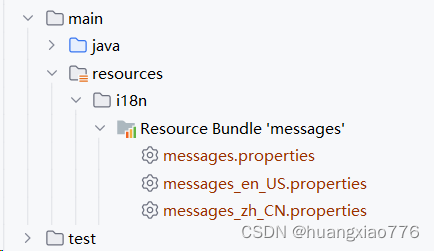
在不配置默认的区域情况下,当没有找到匹配的语言文件时,会读取默认的messages.properties。
如何快速编辑资源包.properties文件
配置application.yml
spring:## note: ---------------- 国际化配置 ----------------messages:basename: i18n/messagesfallback-to-system-locale: false
basename:基名,多个基名以逗号分隔(实质上是完全限定的类路径位置),每个基名都遵循 ResourceBundle 约定,对基于斜杠的位置提供了宽松的支持。如果它不包含包限定符(例如“org.mypackage”),则将从类路径根目录解析它。
基名可以理解为前缀,默认是从classpath根路径下找,配置的路径可以用斜杠/,也可以用.,即i18n/messages或i18n.messages,然后messages就是国际化文件的前缀,messages.properties就是默认国际化文件。
fallback-to-system-locale:如果未找到特定区域设置的文件,是否回退到系统区域设置。如果关闭此功能,则唯一的回退将是默认文件。就是我想要的区域语言文件没有的时候,就从系统中解析系统的区域,以系统的区域再找一次文件,找到就返回系统区域文件,如果找不到,就返回默认的文件。
国际化消息工具类
@Slf4j
@Component
public class LocaleUtil implements ApplicationContextAware {private static MessageSource messageSource;@Overridepublic void setApplicationContext(ApplicationContext applicationContext) throws BeansException {LocaleUtil.messageSource = applicationContext.getBean(MessageSource.class);}/*** 获取国际化message** @param code code* @param args 占位参数* @param defaultMessage 默认值* @return 国际化文本*/public static String getMessage(String code, @Nullable Object[] args, @Nullable String defaultMessage) {return messageSource.getMessage(code, args, defaultMessage, LocaleContextHolder.getLocale());}/*** 获取国际化message** @param code code* @param args 占位参数* @param defaultMessage 默认值* @param locale 地区* @return 国际化文本*/public static String getMessage(String code, @Nullable Object[] args, @Nullable String defaultMessage, Locale locale) {return messageSource.getMessage(code, args, defaultMessage, locale);}/*** 获取国际化message** @param code code* @param defaultMessage 默认值* @return 国际化文本*/public static String getMessage(String code, @Nullable String defaultMessage) {return messageSource.getMessage(code, null, defaultMessage, LocaleContextHolder.getLocale());}
封装国际化文本的读取接口,主要方便在代码中使用,不需要每次@Autowired注入MessageSource来使用。
国际化使用
异常提示国际化
在业务代码中,业务异常我们通常是抛出异常,由统一异常处理来根据异常code和message封装成统一的返回对象,国际化这里我们也是一样,code不变,message改成国际化消息的key。
- 定义业务异常对象
public class BussinessException extends RuntimeException {private String code;public BussinessException (String code, String message) {super(message);this.code= code;}
}
- 定义异常类型枚举
public enum ErrorCodeEnum {DEMO_ERROR(99999, "i18n.user.check.username.err");/*** 提示*/private final String message;/*** 状态吗*/private final String code;ErrorCodeEnum (String code, String message) {this.code = code;this.message = message;}/*** 获取国际化错误提示** @return 错误提示文本*/public String getMessage() {return LocaleUtil.getMessage(message, message);}/*** 获取国际化错误提示** @param args 错误提示参数* @return 错误提示文本*/public String getMessage(Object[] args) {return LocaleUtil.getMessage(message, args, message);}/*** 获取错误code** @return 错误code*/public Integer getCode() {return code;}
}
- 国际化文件配置
在国际化文件都配置上i18n.user.check.username.err不同语言的翻译
## messages.properties
i18n.user.check.username.err=用户名校验不通过## messages_en_US.properties
i18n.user.check.username.err=The username does not comply with regulations## messages_zh_CN.properties
i18n.user.check.username.err=用户名不符合规范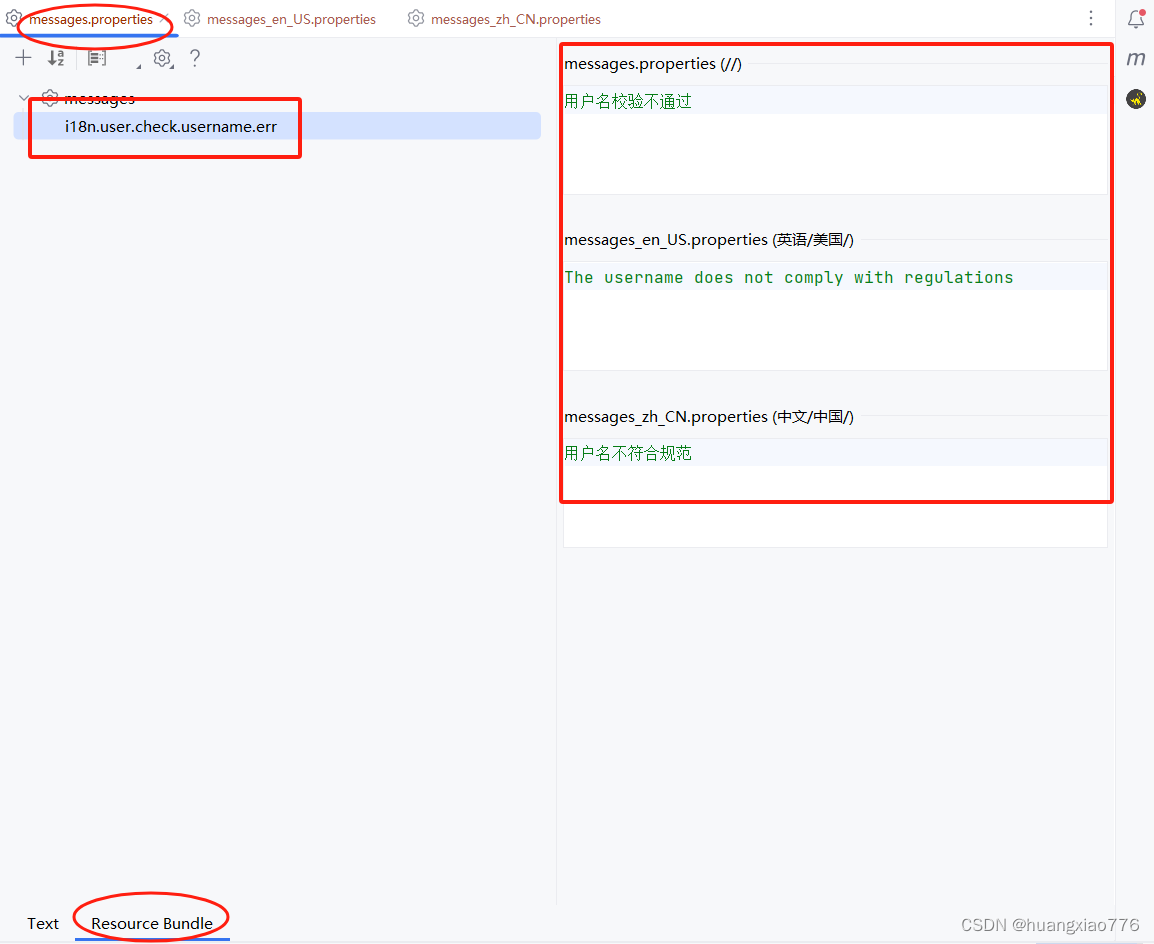
- 业务逻辑校验(使用场景之一)
/*** 校验用户名是否符合规范** @param userName 用户名* @return {@code String}*/public String checkUserName(String userName) {if (StringUtils.isBlank(userName)) {throw new BussinessException(ErrorCodeEnum.DEMO_ERROR.getCode(), ErrorCodeEnum.DEMO_ERROR.getMessage());}// check logic code ...return userName;}
参数校验国际化
SpringBoot项目我们在做参数校验通常会使用JSR303、jakarta.validation参数校验快速失败。
import jakarta.validation.constraints.NotEmpty;
import lombok.Data;@Data
public class TestReq {@NotEmptyprivate String userName;
}
我这里是导入开头的spring-boot-starter-validation依赖就可以使用hibernate-validator给我们提供的常用校验注解的国际化。
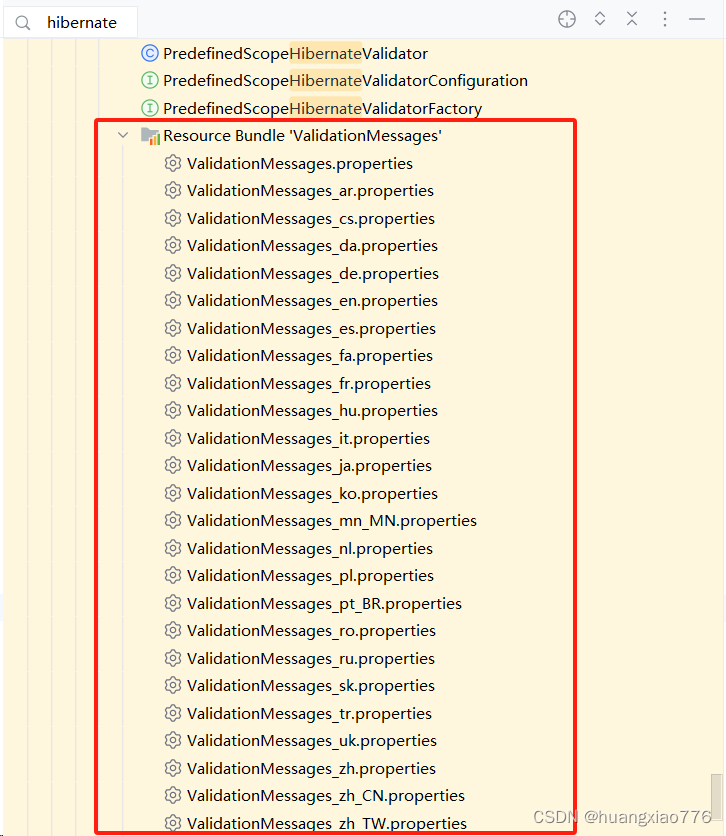
查看@NotEmpty注解源码,message默认就读国际化文件里jakarta.validation.constraints.NotEmpty.message
@Documented
@Constraint(validatedBy = { })
@Target({ METHOD, FIELD, ANNOTATION_TYPE, CONSTRUCTOR, PARAMETER, TYPE_USE })
@Retention(RUNTIME)
@Repeatable(List.class)
public @interface NotEmpty {String message() default "{jakarta.validation.constraints.NotEmpty.message}";Class<?>[] groups() default { };Class<? extends Payload>[] payload() default { };/*** Defines several {@code @NotEmpty} constraints on the same element.** @see NotEmpty*/@Target({ METHOD, FIELD, ANNOTATION_TYPE, CONSTRUCTOR, PARAMETER, TYPE_USE })@Retention(RUNTIME)@Documentedpublic @interface List {NotEmpty[] value();}
}
这里就贴ValidationMessages.properties的jakarta.validation.constraints.NotEmpty.message,其他文件大家自行查看。
jakarta.validation.constraints.NotEmpty.message = must not be empty
自定义校验错误提示信息
当我们不想使用hibernate-validator给我们提供的默认提示信息时,我们可以自定义自己的错误提示信息。这里就复用前面配置的i18n.user.check.username.err
@Data
public class TestReq {@NotEmpty(message = "{i18n.user.check.username.err}")private String userName;
}
如此,在Accept-Language=en-US即我想返回的信息是英文,参数校验不通过时,提示的不是must not be empty,而是我们自定义的The username does not comply with regulations。
结语
时间有限,国际化的实践流程截图没提供,大家根据文中的操作步骤也可以完成国际化的demo,后续有时间再完善,大家也期待下一篇的源码解读吧。
文中如有描述不清楚、读者不理解意思的地方,大家评论区打出,我来完善哈。



